Chris McCann is a General Partner at Race Capital, an early-stage venture capital fund that leads investments in pre-seed and seed-stage technology startups. Prior to Race, Chris was the Community Lead at Greylock Partners and co-founder of Startup Digest, which was acquired by Techstars.
We talk about his journey to investing, Solana, his anti-portfolio, art and more!
The podcast is also available on your favourite podcast sources like Spotify, Apple and Youtube!
NA: Thanks for joining me. Really appreciate your time. I've been following your work on Twitter for quite a while now.
CM: Cool. Yeah, no, thanks for having me. And I'm excited to come on the show and by the way, I love the name, cause I feel like as a venture capitalist, being inquisitive is usually one of the most important traits.
NA: Yeah. Thank you. I, yeah, I spent a lot of time thinking of one and that seemed to fit quite well. So I'd love to start with, I guess, hearing about your background and going from being an entrepreneur to investing and then how you essentially fell down that crypto rabbit hole?
CM: Yeah. Let me give you a slightly longer context, but I'll try to keep it a little bit brief to give you a little bit of the arc. Sometimes I feel like things always make sense, looking at them from now and looking behind the scenes, all the dots connect.
But looking forward, sometimes it's always a little bit harder to see how these things would go. But yeah, I guess I first got started when I moved to the Bay Area, San Francisco Bay Area, in 2009 after I graduated college. I threw all my stuff in my car, I drove up to Palo Alto, no plan, no idea and no job, no anything.
And the first place I went to was this place called University Cafe in downtown Palo Alto and I was eating brunch there and I heard two guys talking about Facebook next to me. And so, I look up and I look over and it was Mark Zuckerberg and Michael Arrington. Michael's the founder of a TechCrunch.
And I was like, wow, this is incredible. Like, literally it was like my first day in Palo Alto, like my first meal. And at that point, I decided that I didn't know how I was, but I was going to be here in Palo Alto. That was my plan. And so long story short, this eventually culminated into the first company I started, which is called Startup Digest.
It was a tech newsletter, mostly focused on a lot of, events, activities, news, and all the things that were going on in this local area. And then we eventually expanded it to other cities. So, at its peak Startup Digest, was covering basically every major metropolitan city in the world. 550 cities, had about a million subscribers and then was eventually acquired by TechStars.
It is still operated and owned by them today. But. I guess it's easy to talk about it now, cause everybody understands tech newsletters, and they're like this really big concept and Substack and all this stuff, back then nobody was doing tech newsletters. This was not a thing. This was not a category.
Nobody understood any of this stuff. We were one of the very early users of this company called MailChimp. So, we were one of the first major publishers on their platform when they were first starting it. And like, literally like none of this stuff existed. So, I love that this is a sub-industry now, but yeah back then was not the case.
And then after that, I built with Startup Digest we actually built a whole bunch of internal tools and stuff for ourselves to manage our community. And we tried spinning this out and turn into its own company. It was called GroupTie. I ran it for about two years.
We were trying to sell community tools that businesses and stuff like that, kind of like Slack and Discord is doing now with these bigger external groups. We're trying to do a lot of that stuff back in the 2012-13 timeframe. Nobody understood any of this stuff. Super hard to get any companies to actually buy into this.
Our largest group that was using it was the Thiel Fellowship, the Thiel Foundation. And they used it for all their mentor communication and all their mentees stuff and all their events and activities for everything. But we had a really tough time getting other companies to take this more seriously and seeing kind of where it fits in.
Cause you know, at the time, none of these big groups, communities, none of this stuff really existed back then. And maybe, I guess this is the repeated pattern that I always see, that it was just a little bit too early. And so while we were winding down that company one of the early users within the Thiel Fellowship, this guy named Dan he pinged me wanting to learn more about the product and stuff.
And at the time he was a partner at Greylock. And so we met at Greylock's offices at Sand Hill Rd and I was giving him a demo showing him, but also telling him the story of why it didn't work and all the lessons learned. And then we started brainstorming about how Greylock itself could use communities and networks, to support portfolio companies find new investments to, you know, do all this kind of stuff.
We had a super long brainstorming session and at the end of it, Dan said, do you want to do this here? And I was like, what do you mean? He's like all this stuff we just talked about, do this here. I was like, okay, that sounds good. And so that's how I ended up at Greylock. Not your typical path into a venture capital fund.
But yeah, I ended up starting and running all the community and network-based efforts and activities for the fund itself, which eventually tied into a lot, emerging market sectors that we're looking at, but yeah, that was my entrance into VC. I initially thought I was just going to be there for a couple of months and probably leave and start something else.
And a couple of months turned into almost five years. So, I was there for quite a while. Working with practically all the partners, all the areas, all the people at the firm itself. And then yeah, after five years, I left did a bunch of angel investments. Some of which I'll probably talk about later.
And then met one of my really good friends Edith Young, we started brainstorming about what we wanted to do next. She was a GP at 500 Startups, and we pulled in two of our other close friends, this guy named Phil Chen and Alfred Chung and we all decided to eventually start Race Capital together.
It's our own fund, our own image. Focus mostly all early stage, so seed up to Series A. More core infrastructure layers are the things that we did. So again, I guess in hindsight, this all sounds really logical, we did a company sold it, VC, started my own fund, but in hindsight, I honestly I was making most of the stuff up half the time.
Like a lot of this was uncharted territory that, you know, I always just weave it in, turning my way, kind of through.
NA: That's really interesting. And great to hear that you were, I guess, pioneering some of these areas before they really existed. And I guess that's why I'd love to hear about how you found crypto then?
CM: Yeah. So yeah, the extended, but truncated version of this is so back in the 2014-15 timeframe, Greylock made a handful of investments in this space, mostly Bitcoin companies, because at the time the crypto industry was really Bitcoin. There, really was not anything else. So, you know, Greylock invested in Coinbase, Zappo, Blockstream a handful of other companies, mostly again, all Bitcoin centric.
So through that experience, I actually got to meet a lot of the really early, core developers of Bitcoin itself. A lot of the core contributors, a lot of the people in the ecosystem, and it was just a, it was a fascinating, very different market subsector than any other thing we were looking at.
I remember at Greylock at the time, we were looking at a bunch of things in AR VR, autonomous vehicles, robotics, all kinds of the newly emerging areas, but the Bitcoin and crypto space as a whole had such a, it was so different with such different considerations. And I had very different assumptions, than everything we took for granted mostly in the tech area.
I was also I guess right place right time. At that time, this was before I was married before kids, I used to live in this big hacker house in Cupertino. And one of the people living there, he was not a founder, but he was like a really early core developer for Ethereum itself.
He kept telling me you need to do the Ethereum ICO, you need to do the Ethereum ICO. But then when I asked him, like, can you tell me a little bit more about this, Ethereum thing. The way he explained it, he's like smart contracts are going to automate lawyers, and I was like, what do you mean you're going to automate lawyers?
It’s going to write all the rules and contracts and code, and it's all going to be enforceable or whatever. It was such a confusing thing at the time. But I listened to him, not enough, but a little bit. And I participated a little bit in the Ethereum ICO. And then I guess like through that experience and knowing a bunch of the kind of friends and people, he knew that that was kind of like what led me down this path.
And I, I guess right place, right time when I left Greylock, this was right in the like 2017 ish timeframe. When a lot of the stuff was also picking up steam. So in 2017, I didn't make a ton of angel investments, but I made a few. In 2017, I was one of the earliest users and investors for this very tiny exchange called Binance, which is just starting. Basically end of 2017, early 2018, I was one of the very first investors for Solana back when Anatoly was first starting the project. I got to know him through a lot of the other previous work that I did.
He was a super talented individual. Really just an impressive person. And then for the fund itself, when, when we formed Race in 2019, we were one of the earliest investors for this other exchange that got started called FTX, which Sam Bankman the founder their also similarly super impressive individual and person.


And so, yeah, I guess going back to the inquisitive theme, some of this is just for self-learning different areas. I want it to be exposed to this stuff. I wanted to use it in, try it, not just talk about it. I feel like a lot of the time people love to talk about all these big, broad concepts of self-sovereignty and your own money and DeFi all this sort of stuff.
But very few people actually use this on a daily basis. Like I've always tried to be more on the usage side of it. And so like, I've used a lot of these things. I've been LPs for a lot of these things. I've farmed a lot of these things. I've created NFTs. I actually like to get into the weeds and use a lot of this stuff.
But yeah, that was, I guess the journey of how I initially heard about it and then kind of how I got sucked down the rabbit hole, so to speak.
NA: No, that's, that's really interesting. And I'm glad you mentioned Solana. Like it's been on an amazing run, I guess, over the past, possibly a bit. I'd love to hear your hindsight view as well, but why you are so bullish on Solana and what really, I guess, drove you to make that initial investment?
CM: Yeah. So as I just mentioned, Anatoly, who's one of the main technical co-founders of the projects himself. He's a ridiculously impressive individual. And so when I met him, I basically told him whatever you do, I don't really care what it is I'm willing to back you and whatever. And then he eventually sent me an email that eventually would become part of the first version of the initial white paper for Solana itself.
Keep in mind back then there was nothing built, no test then no code written. Like literally this thing was a concept, idea. There was nothing built at the time. But I guess what intrigued me so much about it is, 2017-18 this is about the time period when crypto kitties were really taking off, transaction fees started to kick up a lot and there was this big question on if these networks are going to be highly used the transaction fees being so high would really start to be a detriment to the ecosystem.
And so how do you solve the scaling problem? So, a lot of people started coming up with sharding, layer two solutions, roll-ups, zksnarks was kind of in their early days. A lot of these concepts and theories are being talked about and Anatoly, you know, before Solana, he was an infrastructure engineer at Dropbox, and before that he was an early core developer at Qualcomm, mostly working on very low-level protocol type stuff for CDMA chipsets is how we relay all the phone calls back and forth to each other.
I guess Anatoly his insight was when he looked at the scaling problem. He wanted to solve it in the method that he had used before, where he's like, the way you do this, is you pin it through time you know, you don't try to create these super complex networks or whatever, but if you can create basically a clock that everybody can agree upon we can use this to basically order transactions.
There's a very similar concept in the Centralized server world called Google true time. It's a very sort of similar concept idea, but this is applying it to a decentralized, not a centralized network. And so the initial pitch was this, I want to use this time-based sync clock idea to boot shop its own blockchain.
I guess context was, he was not sure if this was going to work, but if it did work, this did have the potential to greatly lower the cost of transactions, greatly increased the amount of transactions that can be handled by the system itself and really scale this for actual internet-scale usage on both sides, for users and for developers.
So, it was one of those, if it worked technically this could be a big thing with a ton of open questions outside of the basics of, could this be built? Could it work? Could it scale? Could this not be centralized to the other marks existential questions of even if you could build this, would anybody actually even care?
Well, developers actually build upon this to do anything with it, cause there was a whole bunch of these layer one scaling solutions or layer two scaling solutions, all being started all being heavily funded. But there was always this question of what anybody builds upon this thing, these new things that you're doing because you can build the best system in the world, but if nobody uses it, it doesn't really matter.
And so yeah, I guess this is contextually where it came about how I met Anatoly and at least like the asymmetric bat that he was going for at the time.
NA: Yeah. That makes a lot of sense. And then recently I saw on Twitter, Dylan from Saber HQ mentioned you decided to lead the round a day after meeting them. How do you form such conviction to lead around in such a short timeframe?
CM: Yeah. So, again, I guess, contextually since I told you this part, like, you know, I've been involved in the Solana ecosystem, literally from the start. In the beginning, you know, they had to build a network, to begin with, and then once it was built, they actually had to find developers and applications that people to build stuff upon it, which by the way, it was no easy task in the early days.
The first, really big break for them was when they eventually got FTX to build Serum, a central limit order book on top of Solana. And after that, that's when you saw a larger proliferation and developers start to take Solana seriously.
Cause before that it was still very much an oddity or like kind of this different path that they took outside of the space, but there was no real concrete usage or use case from it. It was hard to see but FTX team picking it and building Serum on top of it gave a lot of people, an example, to look at a team to follow and, and, and something to really kind of point to, as an example.
And so shortly after there was the very first hackathon that, that Solana put together back at the time, there was really no emphasis on the hackathon. There was a bunch of teams and stuff that got formed, but nothing like we see today. The second hackathon, had a much kind of bigger, wider scope and a lot more people started paying attention to it.
But Saber and Stableswap were really born from the first one. So Saber was initially called Stablewap. They built the Stableswap contract written in Rust and Dylan and Ian, they don't talk about this as much, but they were part of the .. there was an initial core group of about six or seven companies and people that created the word DeFi and this concept of decentralized finance and Dylan and Ian were part of that conversation back then.

So, they had been doing a lot of stuff in this space since again, before it was recognized before it was, you know, cool or whatever. Then Dylan went to go on to work at OKEx for a while and then both of them were very early engineers at Pipe which is a super, highly regarded company in the sort of traditional startup space.
And so we actually happened to know his former boss at OK, And then we knew some of the early team members at Pipe. When we asked them about Dylan and Ian, both of their responses were resounding, what are Dylan and Ian doing? Can I invest? I'm in? What is it? I don't really care. Like I'm all in like these two are ridiculously impressive.
Almost like my reaction to Anatoly, they had the same reaction to Dylan and Ian. And so yeah, we had been looking to make a more significant bet from the fund side on the Solana ecosystem This is the perfect team that we could find and they were really building one of these core infrastructure layers for Solana DeFi, that can be started to use by other protocols and ecosystems in the system itself.
And so yeah, a lot of it was, if I had to sum it up, I guess it was prepared mind, high reference and I greatly appreciated their very clear idea of what they wanted to do and very tight conviction on when they want it to do it. They didn't have a loose broad concept of what they wanted to do.
Like they already had a very tight roadmap, a roadmap and deadlines of what they wanted to hit and by the way, they hit all those at play and way more than that. So we love to find these teams with a high execution sense to them. Cause I feel like a lot of times in the crypto space, sometimes it tends to be more about these big ideas and less about the execution and we tend to kind of bias the other way around.
NA: That's great. I see the similarity in the two stories of Solana and Saber. But yeah, I could see how you could be able to find conviction at that point. What would you say are some highlights of your anti-portfolio and what you've learned from it?
CM: Anti-portfolio that's a good one. I mean, maybe I'll highlight one. There is this company we saw in the pre-seed, seed, seed extension round multiple times and multiple times we said no, Axie Infinity. Again, it's easy in hindsight to look at this and say, this is such a huge success of why was this not so obvious, much harder in foresight.
I guess it was a little bit easier for us, because again, we don't tend to focus as much on the gaming side. We're more core infrastructure, low-level transaction systems, plumbing type stuff that tends to be our sweet spot. We don't tend to do as much on the pure consumer-level applications. So, whether that's games or creator type stuff or social apps or anything like that, it's just not our sweet spot not to say that these things won't work or be successful.
Obviously, they have, but it's just not, it tends not to be our emphasis. But yeah, at the time Axie Infinity, was these cute little characters that you can battle that you could have and that you can own. And the artwork and design were always really well done, but I did not have the foresight to see how this would turn out to be significant scale.
And again, none of the play to earn concepts were baked in back then. None of them were even really explored or whatever. But you know, I really should have been more inquisitive and learnt about that space, despite my scepticism. And then my partner Edith used to be at 500 Startups and one of her other 500 Startups counterparts, this guy named Binh Tran.
He did invest in their seed round when they were first starting, and it's been a huge multiple fund returner for him. So again, I think in the venture space, you can't win them all. There are certain sectors you do, certain sectors you don't do. The other thing, which I try to emphasize too, is you should find and source and pick companies that you are actually genuinely interested in, and you're going to use in some way.
So, even though it's part of the anti-portfolio, it's only like, I just wouldn't have been the right type of person for that at the time. Like it was just not my thing. Where you really want to find an investor who ideally, you want to find an investor who genuinely likes what you're doing.
Not just because they think they can get a return from it, but like, they actually are like into the product, into how it works. Again, they don't need to be the number one user of it, but they should actually use the product in some form or fashion.
NA: Yeah, no, I hear you. That's a great one, actually, especially with the run, it's been on. What's a secret obsession of yours that not many people know about?
CM: I'm not sure how many people not know about it, but yeah, outside of the venture world, I also have a family and stuff. I have a pretty big hobby. I've been doing photography for a really long time. Since before the Bitcoin Genesis block. And it's always been more, just like a kind of hobby passion thing to kill time if you will. But I tend to get pretty hardcore about it, I guess.
And then in 2016, I was the national geographic photographer of the year which is kind of a crazy thing to win. And so after I won that, I started to do a lot more of these galleries, exhibitions, showings commission type stuff.

So, I've done a lot of stuff in that, I guess, the more traditional art world too. And so, when all this crypto NFT stuff came about, I had always been, trying to find a way of how to use more of this artistic, creative side to try some of these things. And kind of like what I was saying before is, I actually like to use the stuff, not just talk about it.
And so one of the things I tried is, I want it to go to the full end-to-end process of actually taking a photograph and actually creating, minting an NFT through the whole thing, again, not just in theory, but to actually do it myself. In the Ethereum space, I've been an early launch partner for a handful of these new NFT marketplaces.
And then I guess most recently is I guess my love for Solana. I've been trying to see how I can do this in the Solana space. And so, I have again, it's more of like an art thing, but more of like an art project generative artist side, then I'm going to do a called Playground within the Solana space.
Again, this is more for fun, for the experiment, for playing. Like it not as serious for me. Like, I guess it's my own artistic outlet for a lot of the stuff, but I don't know how many people know this, but I guess it's out there now.
NA: That's really cool. I'll be looking forward to that one. What's the latest, publicly announced investment you've made and why did you make it?
CM: The latest publicly announced investment. There's a whole bunch of them that have not been announced that I probably can't talk about. The latest one that I guess one of the things that context, so Race Capital venture fund, we're not like a pure crypto fund, so we definitely make investments in the space, but we do a lot of other general things, too, anything on the infrastructure layer.


And so, our most recent investment, we publicly talked about was we were a very, very small part of the most recent round that Databricks just raised. Databricks is a super well-known company in the data infrastructure space. My partner Alfred, was one of their early seed investors.
So similar to me in Solana, he has his own story with Ion Stoica there and how he got involved with Databricks when it was originally Spark. And so we did a small participation in that one, that's probably the most recent one we announced.
NA: Okay. Thank you. Now that that's a really interesting one. It's good to hear that you're actually quite more across general tech as well. Not just crypto.
CM: Yeah. Crypto is one of those specific subspaces that like you have really have to get into and know about and kind of be part of the ecosystem. But at the same time, I also think a lot of crypto people would benefit a lot from knowing kind of what's going on more in the general tech world. So, we tend to straddle this much more than a lot of other firms out there.
NA: Yeah, no, fair enough. I feel like it's getting quite hard to stay across crypto at this point as well, with all the things happening.
CM: Yeah, maybe one other comment to that is you know, back in the 2014-15 timeframe, crypto used to be such an easier space because it was just Bitcoin.
Even in 2017-18, it was a much more manageable space. Now it's so wide-ranging like crypto isn't like a singular thing anymore. There's all the way from layer one protocol, transaction systems up to DeFi financial related content, to NFT, artistic related things to creator economy, to social. to on and on and on.
Like, it's actually a much more horizontal sector than I think most people give it credit for. And so, there's definitely certain people and firms and stuff that tend to focus on others like certain subspaces versus the other. And so, yeah, crypto isn't like the singular concept either it's like this actually multifaceted space and yeah, it'd be almost impossible to try to keep up with every single thing going on. Like it's impossible at this point.
NA: Yeah. No, I agree. And I've been working full-time in crypto and I always feel behind. That's all the questions I had Chris. Once again, thanks so much for coming on. Really loved talking to you.
CM: Cool. Yeah. Thanks for having me. And yeah if any founders are out there building anything in the crypto ecosystem or specifically the Solana ecosystem, I'm just chris at race dot capital.
So feel free to reach out anytime.
Follow me and Chris on Twitter here!
Disclaimer: The Inquisitive VC is provided for informational purposes only and is not intended to provide commercial, financial or legal advice. Nothing in this article constitutes an offer of securities or regulated financial products or financial services to any person.

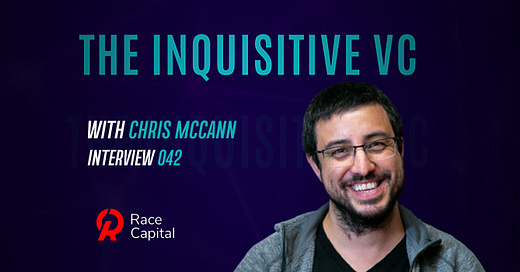








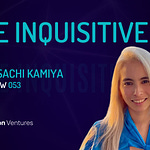

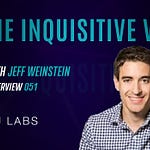
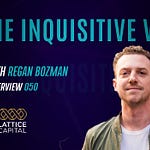

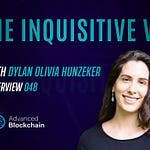
Share this post